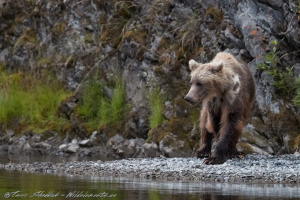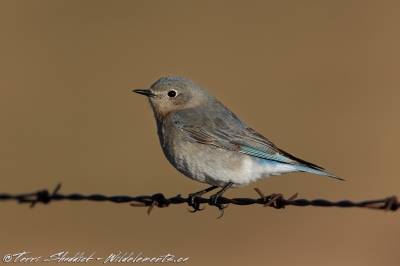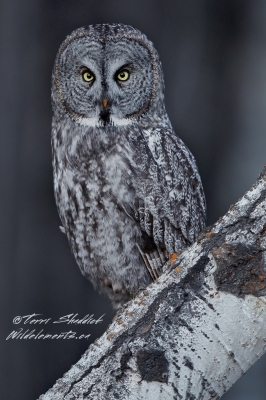05 Sep Canon 1D X Mark II – Initial Thoughts
Notice: Trying to access array offset on value of type bool in /var/www/wp-content/plugins/bridge-core/modules/shortcodes/shortcode-elements/_social-share/templates/social-share.php on line 124
I have finally had the opportunity to put the Canon 1D X Mark II through the wringer, and have had the chance to test it in my “normal shooting conditions”. I have already made a few comments about the camera in other posts, but thought I would consolidate all my thoughts into one post. I will follow-up my initial thoughts with some specific blog posts testing each of the areas that I have noted below. (All comparisons noted below were made in comparison to the 1DX).
Thought 1 – Improved Image Quality at High ISO
The very first post I made about the 1DX Mark II (after the post that I finally had one in my hands) was that I was impressed with the ISO performance of the camera. Well after working in more low-light/high ISO scenarios, I still stand by that.
There are two things that I have noticed with high ISO images (by high ISO I am referring to images above ISO 5000):
1 – Noise is more manageable noise than with the 1DX,
2 – The dynamic range and detail that is still retained in these images.
I found that with the 1DX that once you got it over ISO 6400, even if you could manage the noise, I often didn’t have the details left in the image to produce an image with a sharp eye, or where you could see the dimples on the bear’s nose. And if I somehow managed to save all the detail, I had very little dynamic range to work with, and the image looked very flat. However I am finding with the 1DX Mark II that I am able to have both higher dynamic range, and still have the detail to recover in these images.
Thought 2 – Improved Autofocus
I don’t know how I can accurately test this and relay in a blog post (in terms of images) but I have found after shooting every bird in flight that I saw over the two trips that initial AF acquisition is significantly faster on the 1DX Mark II than the 1DX. I had the two cameras set up identically (in terms of AF parameters via the Cases), and each time it seemed like the 1DX Mark II was noticeably faster at getting focus.
Again, not really sure how I can prove this, other then to say, trust me…or get your hands on one and try it for yourself.
The reason for this faster initial focus acquisition is likely the combination of improved algorithmic along with the increased sensor size to 360,000 pixels.
I also found that the 1DX Mark II, held focus longer then the 1DX (without slipping off, or losing focus of the subject). I plan to gather some birds in flight images to show a sequence shot with the 1dx and then those with the 1dx mark II, including those out of focus. While reviewing images I was beginning to be able to guess which camera the birds were shot with based on the number of shots that were out of focus without checking the metadata.
Thought 3 – All AF Points at f/8:
I guess you could say that this is part of the improved Autofocus, however I think this is worth having it’s own section because I think this is a huge improvement. As opposed to the 1DX which only had f/8 focus at the center point (after firmware update), the 1DX Mark II has the ability to focus at all points
at f/8. This means I had the ability to use combinations such as the 500mm f/4L IS and a 2.0x extender, or the 100-400mm f/4.5-5.6L IS II USM and the 1.4x extender, and I was SUPER impressed with the results.
I tested both these combinations on my recent Marine Mammals trips, and was thoroughly impressed with the results. Especially when you think about the number of focal lengths you can cover with only two lenses. I can basically cover everywhere from 100mm-1000mm, and using the 100-400 with the 1.4x extender gives me the equivalent focal length of the 200-400 f/4 without the weight (and price tag). With the 1DX I had tried 1000mm (500mm f/4 + 2x extender), but I was never really happy with the images. They were more of ID shots, and maybe good at web-size versus the images that I took with the 1DX Mark II.
As much as I really liked the results of the above two mentioned combinations, I will admit that I did have an increased number of images with soft focus then just using those lenses without the extenders. Also, as impressed as I was with the results, it’s not going to be something I use all the time because I don’t want every photo I have to be at f/8 (or more realistically f/11). However I can see times when it will work really well, or provide an opportunity to get in tighter with something when you have already taken all the shots at the native focal range, or when shooting an animal that just doesn’t want to get close, like wolves in Yellowstone.
I am going to do more testing on this, and specifically comparing to the 1DX.
Thought 4 – Improved Frames per Second and Buffer
The final improvement that I think it’s important to highlight, and I found particularly useful during my last trip, is the increased frames per second, however, more importantly is the increased number of shots before the camera started to buffer. With the CFAST cards I was able to get over 100 shots (in RAW format) before the camera started to buffer. When using the CF cards I was able to get about 50 shots before the camera started to buffer. This is compared to about 35 shots that I was able to get with the 1DX. I would say most of the time this isn’t an issue, because when do you really need that many shots, however, when you have a serial breacher Humpback Whale (as we did during the last Marine Mammals trip), it was very nice to not have to “manage the camera” and take shots selectively to ensure you don’t buffer out, and end up stuck when the action peaks.
I will be continuing to test all the of these things over the next few months, and will post updates to the above including more images showing some of the differences.
I have finally had the opportunity to put the Canon 1D X Mark II through the wringer, and have had the chance to test it in my “normal shooting conditions”. I have already made a few comments about the camera in other posts, but thought I would consolidate all my thoughts into one post. I will follow-up my initial thoughts with some specific blog posts testing each of the areas that I have noted below. (All comparisons noted below were made in comparison to the 1DX).
Thought 1 – Improved Image Quality at High ISO
The very first post I made about the 1DX Mark II (after the post that I finally had one in my hands) was that I was impressed with the ISO performance of the camera. Well after working in more low-light/high ISO scenarios, I still stand by that.
There are two things that I have noticed with high ISO images (by high ISO I am referring to images above ISO 5000):
1 – Noise is more manageable noise than with the 1DX,
2 – The dynamic range and detail that is still retained in these images.
I found that with the 1DX that once you got it over ISO 6400, even if you could manage the noise, I often didn’t have the details left in the image to produce an image with a sharp eye, or where you could see the dimples on the bear’s nose. And if I somehow managed to save all the detail, I had very little dynamic range to work with, and the image looked very flat. However I am finding with the 1DX Mark II that I am able to have both higher dynamic range, and still have the detail to recover in these images.
Thought 2 – Improved Autofocus
I don’t know how I can accurately test this and relay in a blog post (in terms of images) but I have found after shooting every bird in flight that I saw over the two trips that initial AF acquisition is significantly faster on the 1DX Mark II than the 1DX. I had the two cameras set up identically (in terms of AF parameters via the Cases), and each time it seemed like the 1DX Mark II was noticeably faster at getting focus.
Again, not really sure how I can prove this, other then to say, trust me…or get your hands on one and try it for yourself.
The reason for this faster initial focus acquisition is likely the combination of improved algorithmic along with the increased sensor size to 360,000 pixels.
I also found that the 1DX Mark II, held focus longer then the 1DX (without slipping off, or losing focus of the subject). I plan to gather some birds in flight images to show a sequence shot with the 1dx and then those with the 1dx mark II, including those out of focus. While reviewing images I was beginning to be able to guess which camera the birds were shot with based on the number of shots that were out of focus without checking the metadata.
Thought 3 – All AF Points at f/8:
I guess you could say that this is part of the improved Autofocus, however I think this is worth having it’s own section because I think this is a huge improvement. As opposed to the 1DX which only had f/8 focus at the center point (after firmware update), the 1DX Mark II has the ability to focus at all points
at f/8. This means I had the ability to use combinations such as the 500mm f/4L IS and a 2.0x extender, or the 100-400mm f/4.5-5.6L IS II USM and the 1.4x extender, and I was SUPER impressed with the results.
I tested both these combinations on my recent Marine Mammals trips, and was thoroughly impressed with the results. Especially when you think about the number of focal lengths you can cover with only two lenses. I can basically cover everywhere from 100mm-1000mm, and using the 100-400 with the 1.4x extender gives me the equivalent focal length of the 200-400 f/4 without the weight (and price tag). With the 1DX I had tried 1000mm (500mm f/4 + 2x extender), but I was never really happy with the images. They were more of ID shots, and maybe good at web-size versus the images that I took with the 1DX Mark II.
As much as I really liked the results of the above two mentioned combinations, I will admit that I did have an increased number of images with soft focus then just using those lenses without the extenders. Also, as impressed as I was with the results, it’s not going to be something I use all the time because I don’t want every photo I have to be at f/8 (or more realistically f/11). However I can see times when it will work really well, or provide an opportunity to get in tighter with something when you have already taken all the shots at the native focal range, or when shooting an animal that just doesn’t want to get close, like wolves in Yellowstone.
I am going to do more testing on this, and specifically comparing to the 1DX.
Thought 4 – Improved Frames per Second and Buffer
The final improvement that I think it’s important to highlight, and I found particularly useful during my last trip, is the increased frames per second, however, more importantly is the increased number of shots before the camera started to buffer. With the CFAST cards I was able to get over 100 shots (in RAW format) before the camera started to buffer. When using the CF cards I was able to get about 50 shots before the camera started to buffer. This is compared to about 35 shots that I was able to get with the 1DX. I would say most of the time this isn’t an issue, because when do you really need that many shots, however, when you have a serial breacher Humpback Whale (as we did during the last Marine Mammals trip), it was very nice to not have to “manage the camera” and take shots selectively to ensure you don’t buffer out, and end up stuck when the action peaks.
I will be continuing to test all the of these things over the next few months, and will post updates to the above including more images showing some of the differences.
Notice: Trying to access array offset on value of type bool in /var/www/wp-content/plugins/bridge-core/modules/shortcodes/shortcode-elements/_social-share-list/templates/social-share-list.php on line 104









